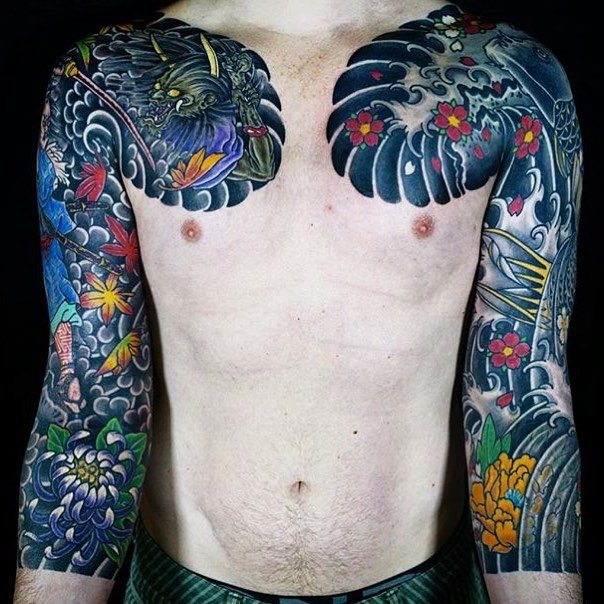
Choosing the floral component to go with your Japanese tattoo can be quite hard when you educate yourself on the meaning and symbology behind each motif. There are some basic pairings that go together, they just work. Like tiger and bamboo. They are a harmonious match. But what about everything else?
Cherry Blossoms
Cherry blossoms or sakura represent beauty and the fragility of life in Japanese culture. They are a spring blossom that bloom in abundance throughout Japan and are the centre of their festival culture. Their blossoming period is quite short, and they are susceptible to wind and rain. The flower falls off the tree in full bloom, each perfect and bright petal falling to the ground. The use of this flower in Japanese art or tattoos symbolise the transience of life, and have been often used as a metaphor for a warrior killed early in life. This flower can be used to represent life after illness, or to honour a lost love. It is a symbol of femininity and grace, and can be paired back with most Japanese tattoos.
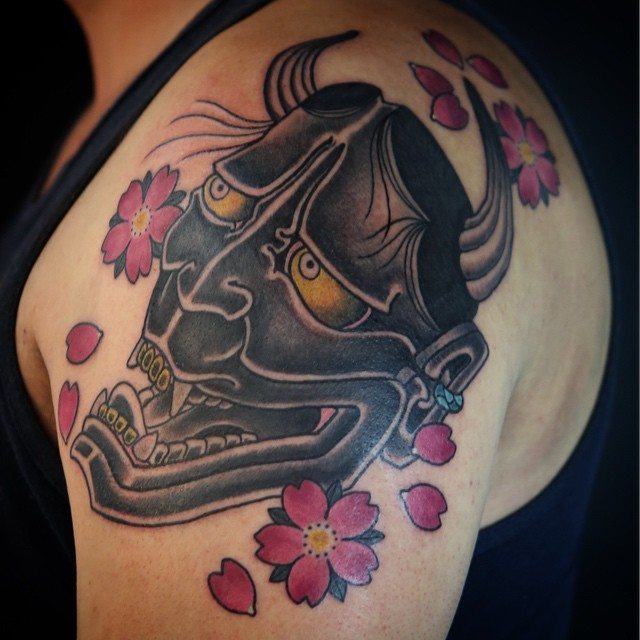
Hannya mask and cherry blossoms by Enku Shoji
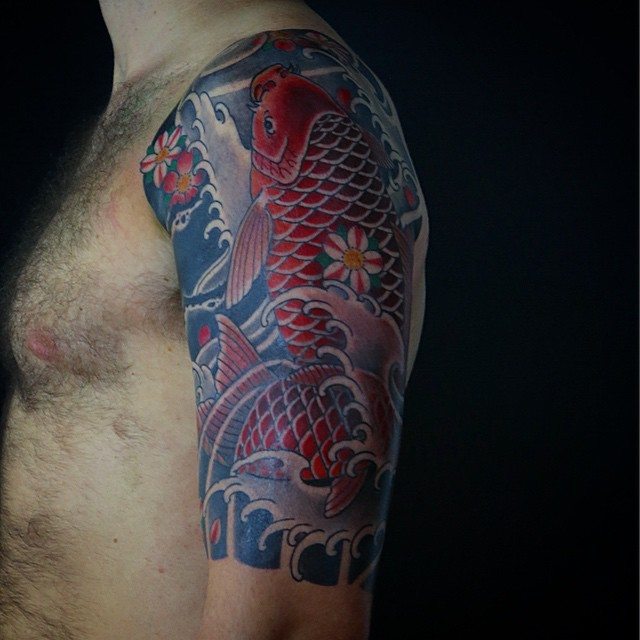
Koi sleeve with water and cherry blossoms by Ning Chula
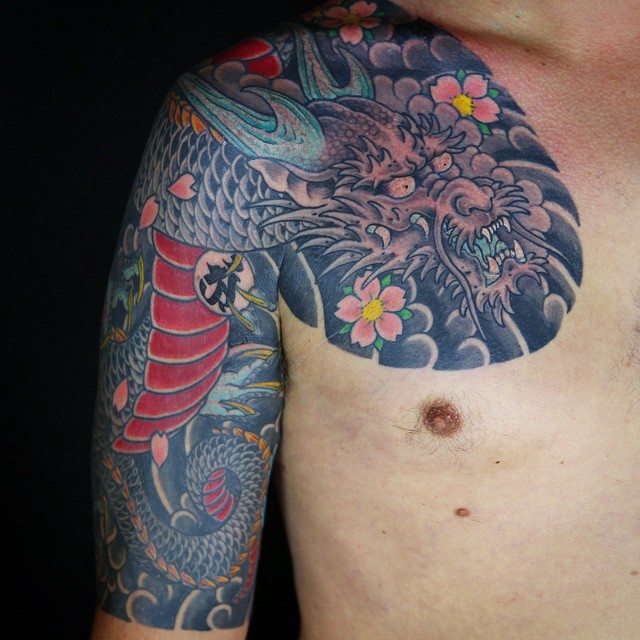
Dragon sleeve and chest plate with cherry blossoms by Kian Horisumi Forreal
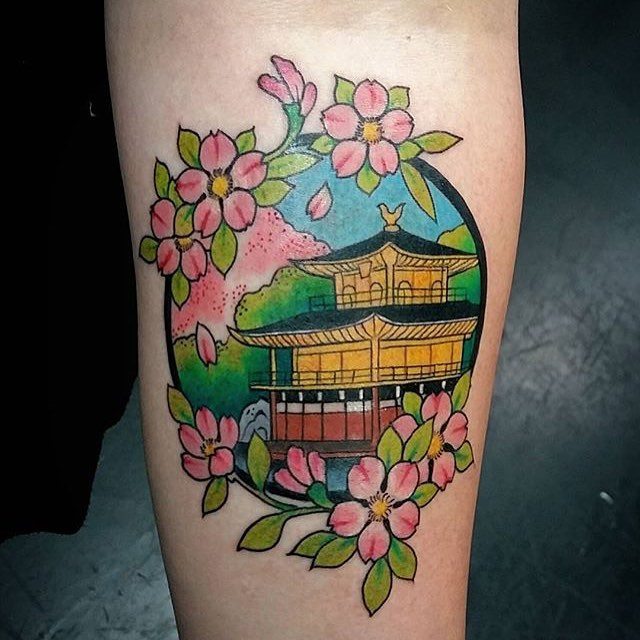
Pagoda and cherry blossoms, by Jess Martucci
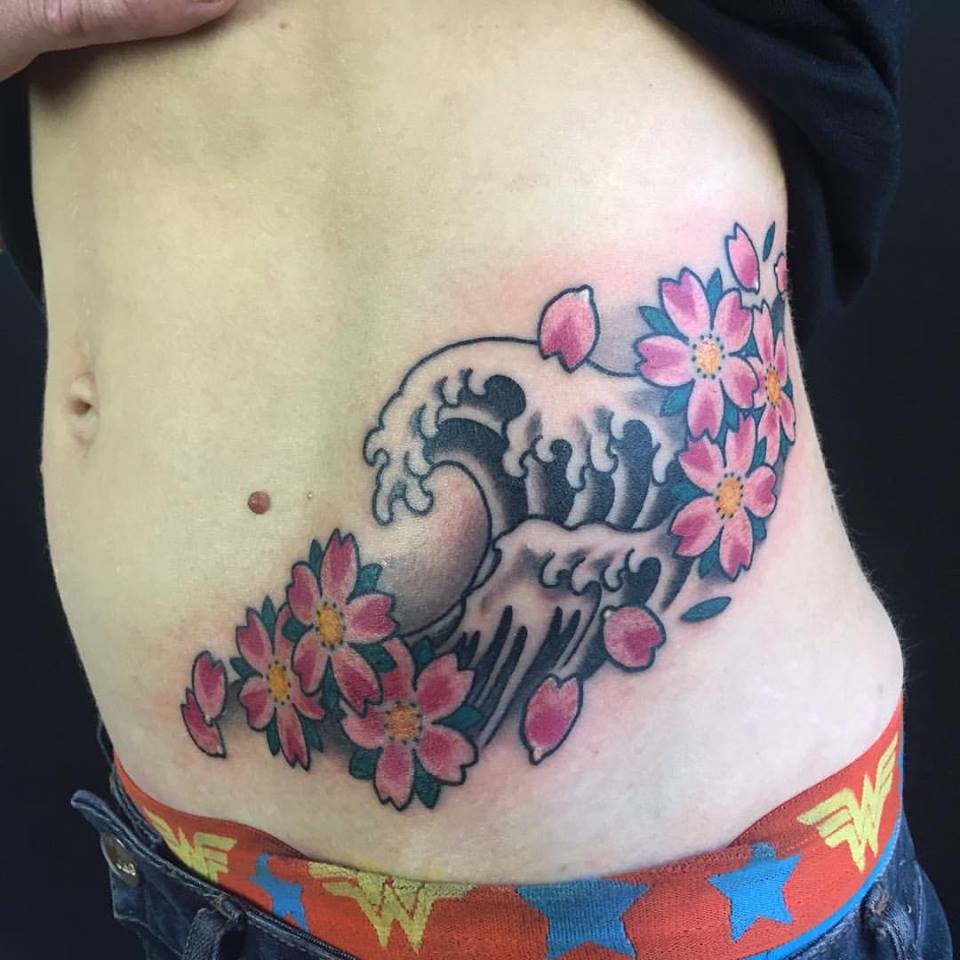
Cherry blossom and waves on ribs, by Enku Shoji

Koi and Cherry blossom sleeve by Lauren Fox
Lotus
The lotus flower represents purity, an exquisite flower emerging from a murky pond. It can also symbolise truth, faith, harmony and a spiritual awakening. They re usually used in tattoos alongside a watery theme, so are ideal with kois, and water based deities.
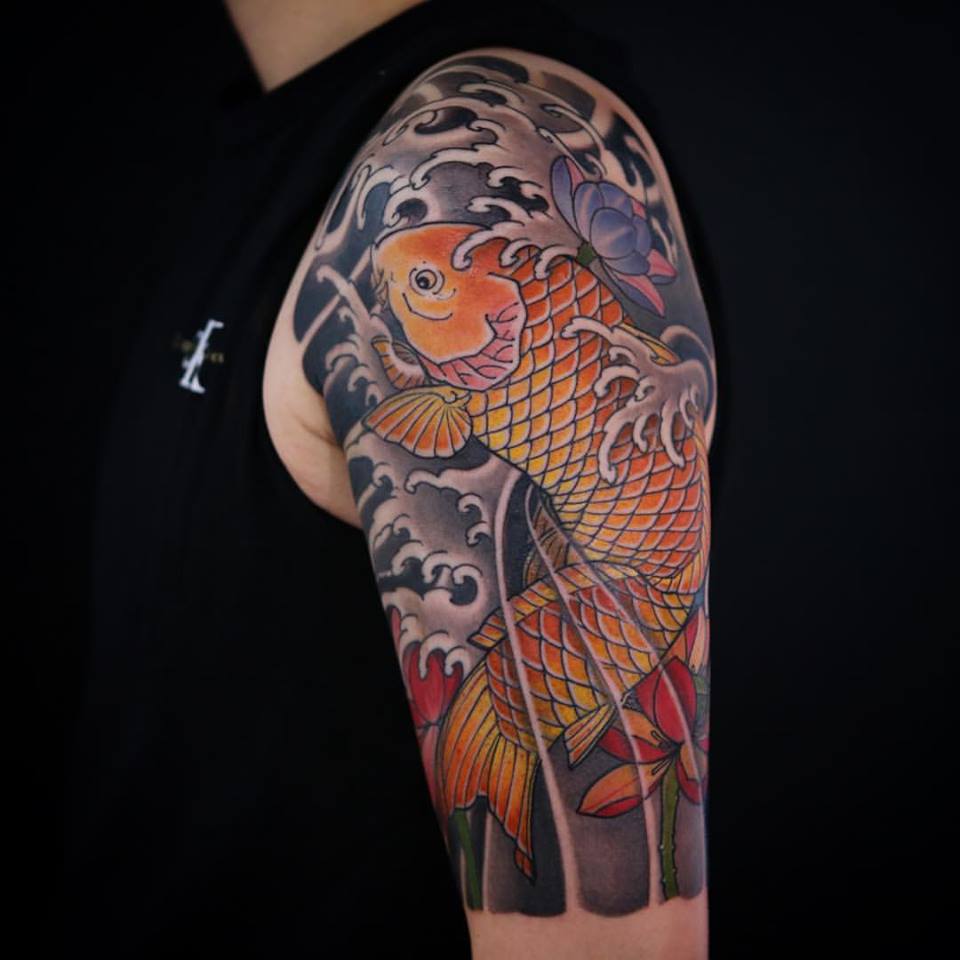
Koi and lotus half sleeve by Ning Chula
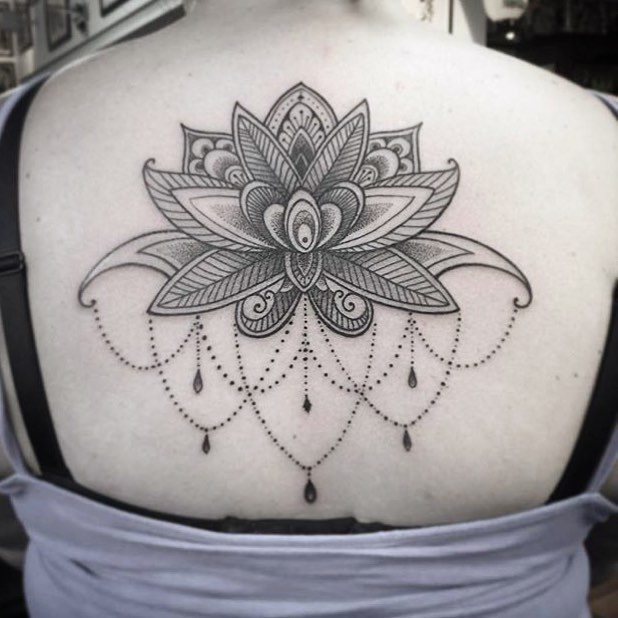
Not a Japanese tattoo style, but a different take on a traditional Japanese flower tattoo– the lotus as an ornamental lotus, by Ning Chula

Lotus and snake half sleeve by Enku Shoji
Peony
Peony tattoos symbolize wealth, good fortune and prosperity. The peony is a strong symbol of beauty, fragility and transitory nature of existence. Furthermore, they depict that getting great rewards is only possible by taking great risks.
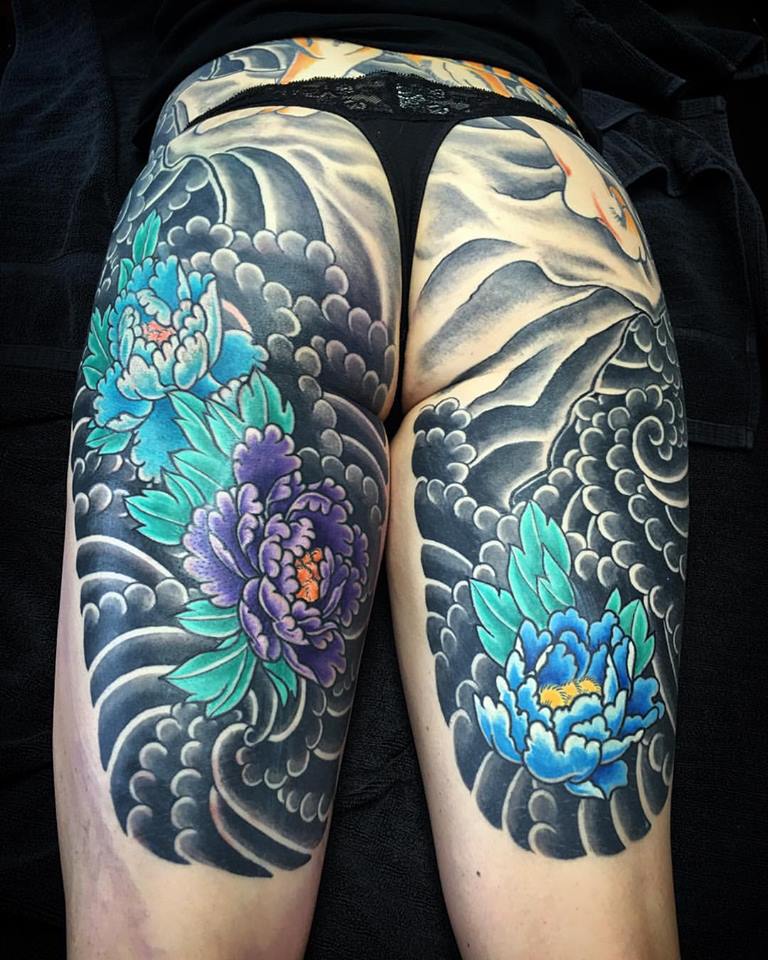
Peonies on the back of thighs, as part of a full Tiger Back Piece, by Kian Horisumi Forreal
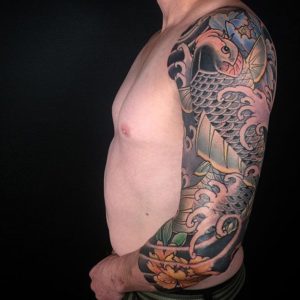
3/4 Koi and Peony sleeve, by Ning Chula

Peony and Koi Dragon half sleeve, by Ning Chula
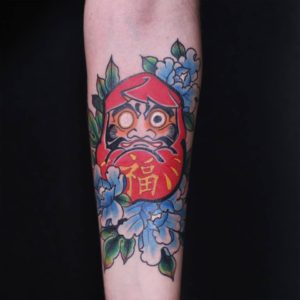
Daruma and Peony forearm piece, by Jess Martucci
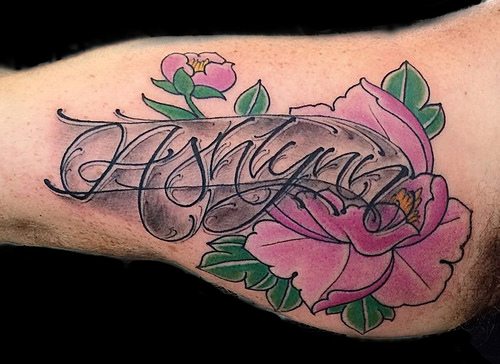
Script and Peonies, by Lance St Vincent
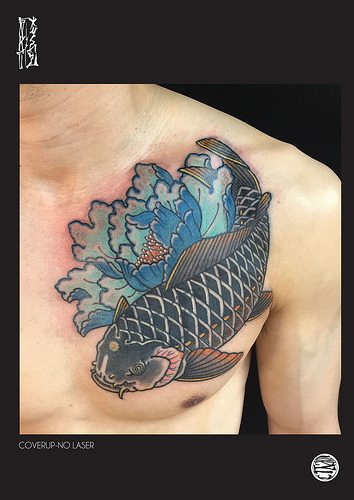
Peony and koi chest piece by Enku Shoji
Chrysanthemum
In Japan, the chrysanthemum is associated with royalty–namely the emperor, who sits on what the Japanese have titled the Chrysanthemum Throne. It represents perfection and, in some interpretations, deity. It is also known as the “King of Flowers”. The chrysanthemum is also symbolic of happiness or joy, as well as longevity
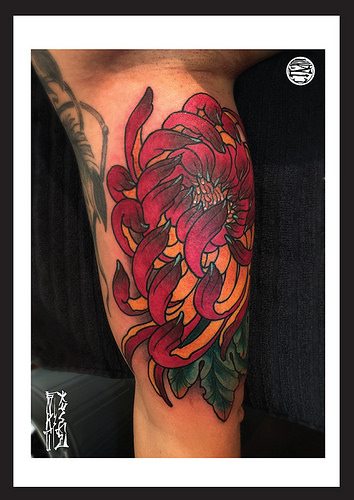
Chrysanthemum piece by Enku Shoji
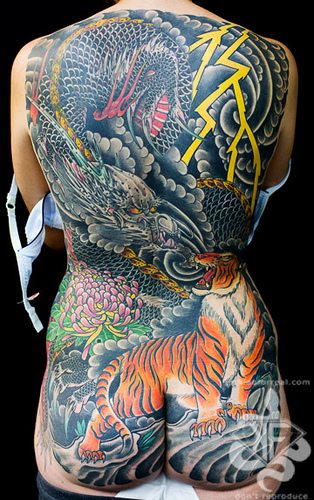
Dragon, tiger and Chrysanthemum back piece by Kian Horisumi Forreal

Koi half sleeve with chrysanthemum chest plate by Kian Horisumi Forreal
Maple Leaves
It is important to note that the use of the maple leaf in Western tattoos is very different to Eastern tattoos. The Western use can be interchanged with a rose, and is a symbol of Canada. While the maple leaf in traditional Japanese tattoos refers to love, peace and harmony. It also symbolises transience and passing of time, it can be represented in a range of Autumnal colours, from greens to yellows, through to oranges and reds.
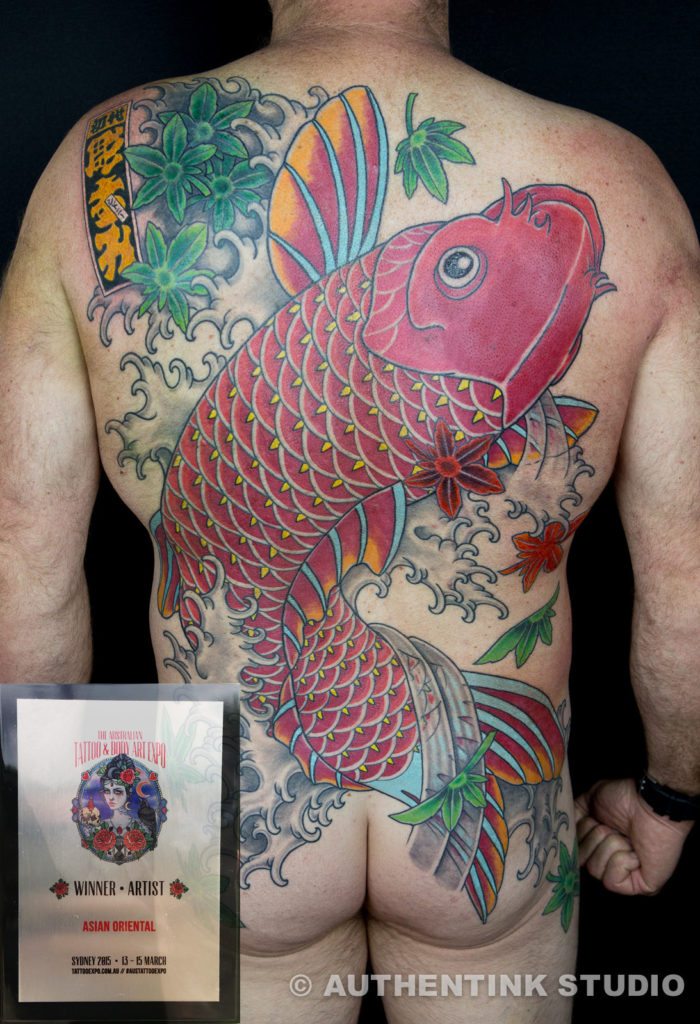
Full koi back piece with Maple leaves, by Kian Horisumi Forreal
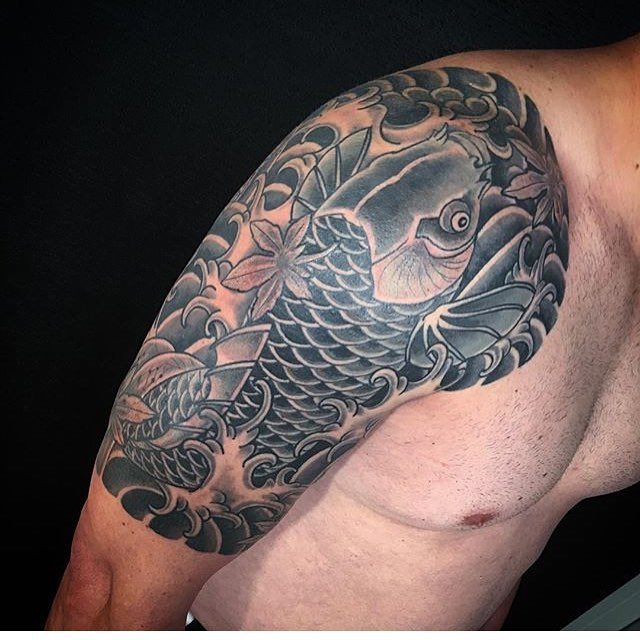
Black and grey koi half sleeve with maple leaves, by Kian Horisumi Forreal
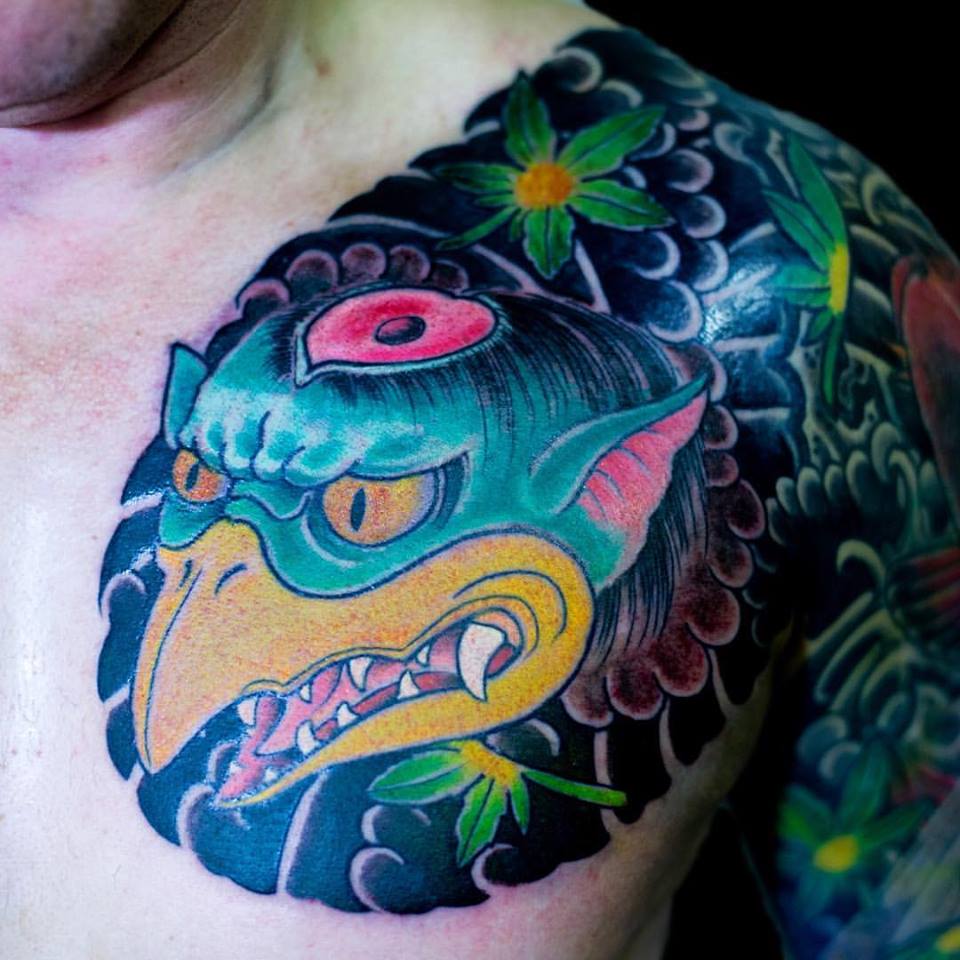
Kappa chest plate with maple leaves by Kian Horisumi Forreal
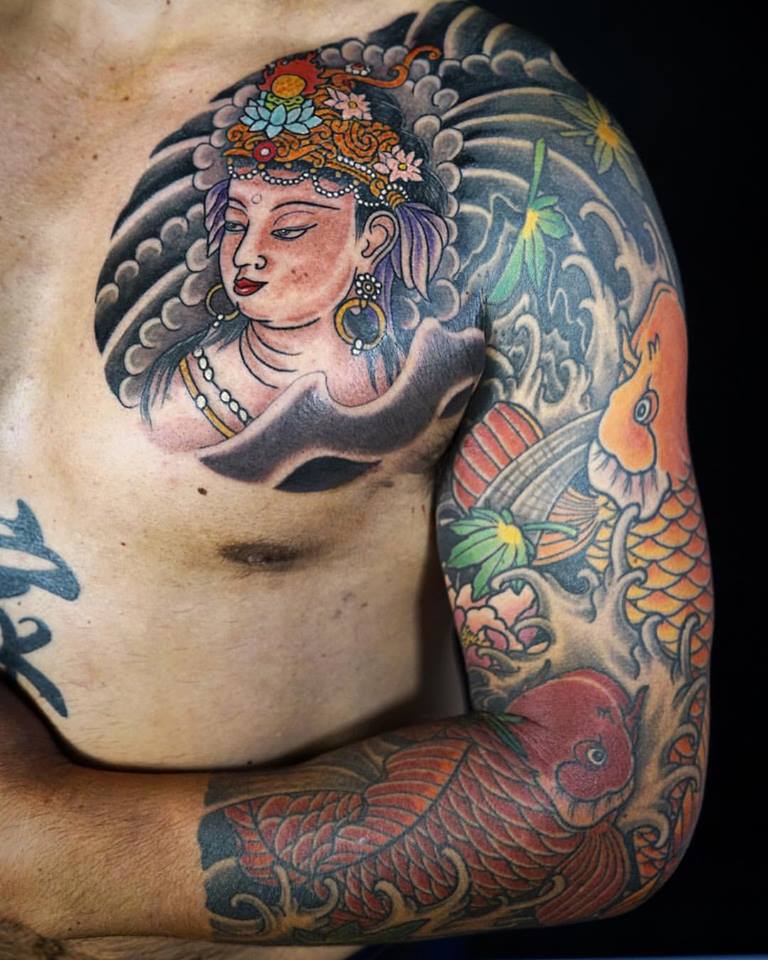
Rose
The rose tattoo is another popular flower tattoo. While it is less common in Eastern tattoo art, the rose tattoo is a staple of traditional American tattoo culture. The rose tattoo is generally regarded as meaning love, or beauty, due to these same qualities being associated with the flower itself. But the rose tattoo has much deeper meaning and a very long history in tattoo art.
The rose tattoo is also believed to mean balance, symbolize an undying love, hope, and new beginnings. Adding the stem with thorns can provide additional, contrasting meaning such as defense, loss, and thoughtlessness.
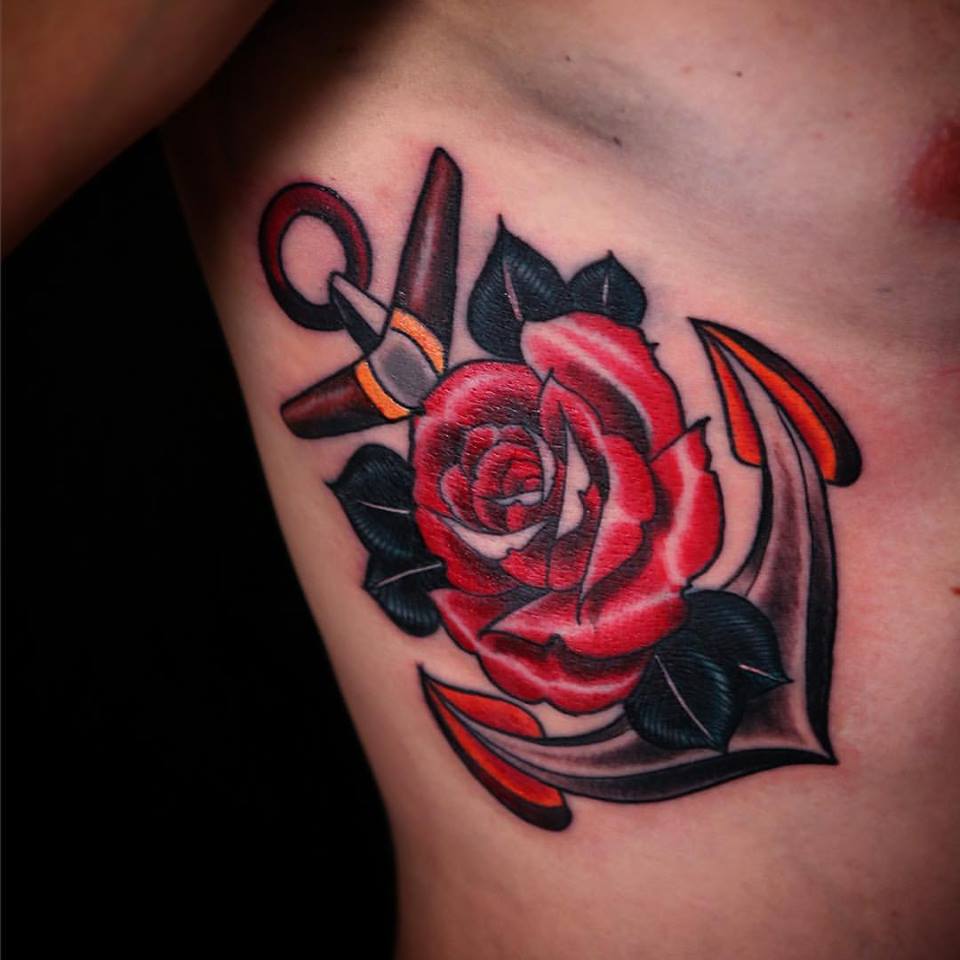
Rose and anchor by Jess Martucci
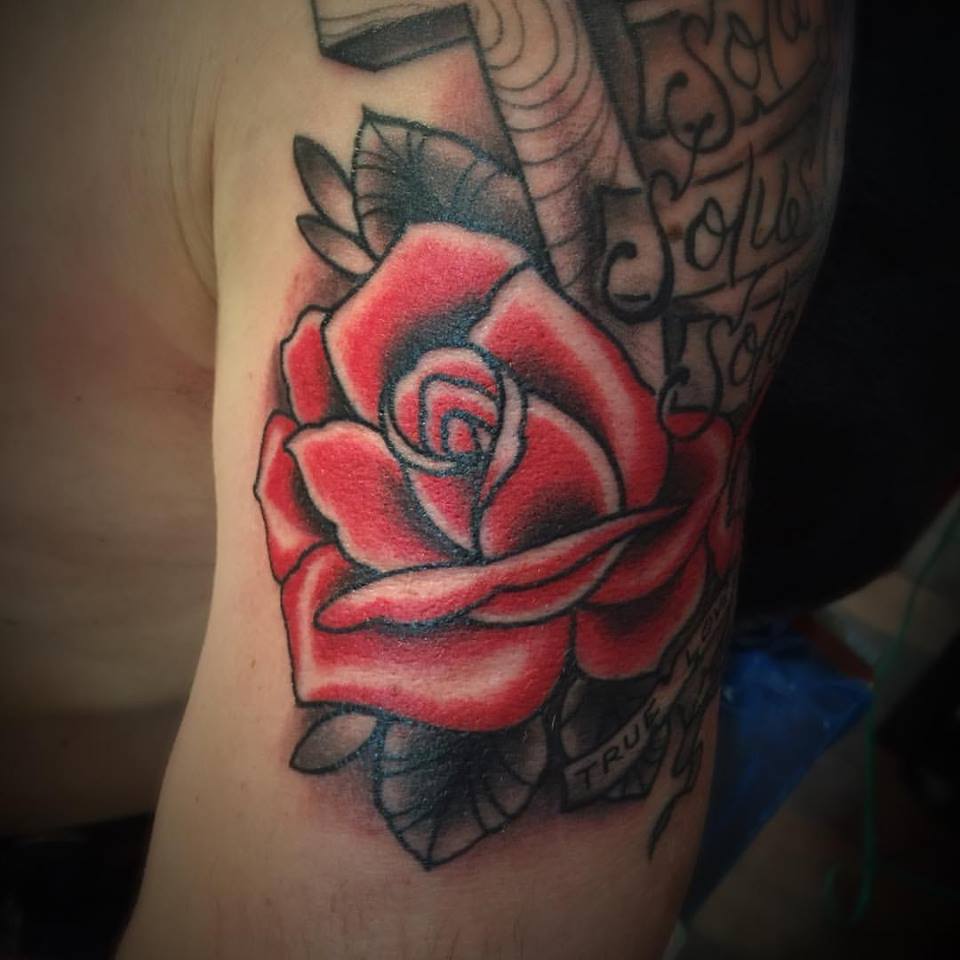
There are literally thousands of floral motifs which can be used for tattoos, and it is a good idea to research the ones you’re interested in and find some reference that you like to bring to your consult with your artist. If you would like to book a consult, you can do that by clicking here and selecting your artist!